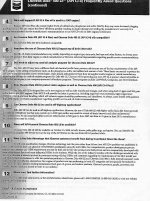Shimon
Platinum Member
No, sounds like total BS.
The Kubota engineer that Happyman spoke with is actually right. CJ-4 oils are made for the low sulfur diesel fuels. If you use high sulfur diesel fuel, you can still use CJ-4 oils but you need to change the oil more often.
I have attached a scan of a document that Chevron put out when the Delo LE oils came out which answers many questions. I have since not been able to find it on their webpage. But I kept it specifically because of FAQ #9 which states that if you use high sulfur fuel (5000ppm) then you need to "revise your oil drain intervals"...change oil more often. They are not specific about 500ppm but it's implied (or I read it that way) that oil change intervals need to be more frequent.
I think it would be difficult to get Chevron to equivocally state that you need more frequent oil change intervals with their CJ-4 oils. But the bottom line, from this document, is that CJ-4 oils have a harder time dealing with high sulfur fuels.
So, in my opinion as a diesel mech, I would say go ahead and use the CJ-4 oils with higher sulfur fuels but just change your oil more frequently...how much? I don't know. Do it twice as often. Or stockpile CI oil (as I have done) just in case. Pretty soon all diesel fuel will be moving to low sulfur if it isn't already so we are just dealing with a transitional phase. Hope this helps. And remember that my "advice" is free so it's worth exactly that.
Attachments
Last edited:


